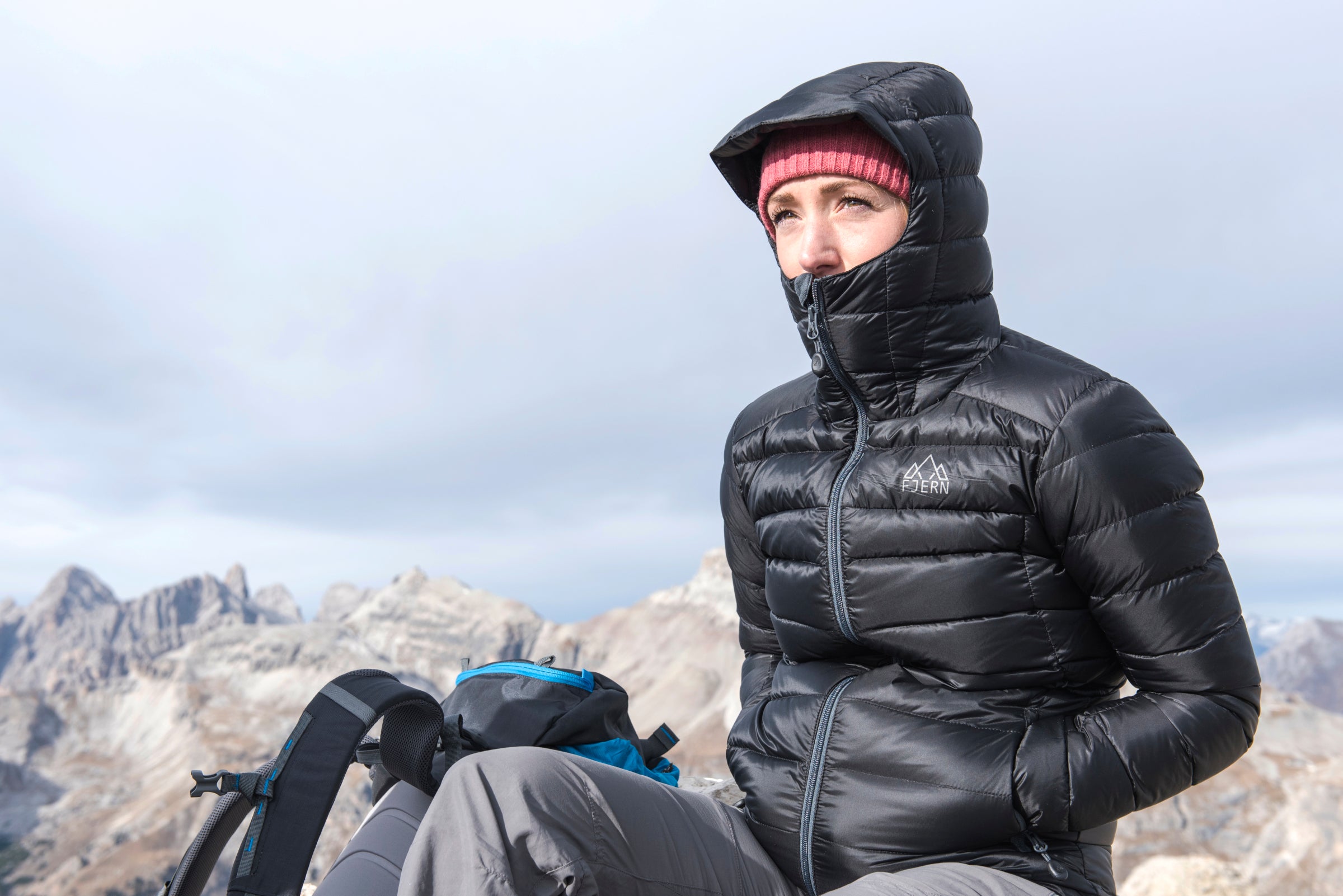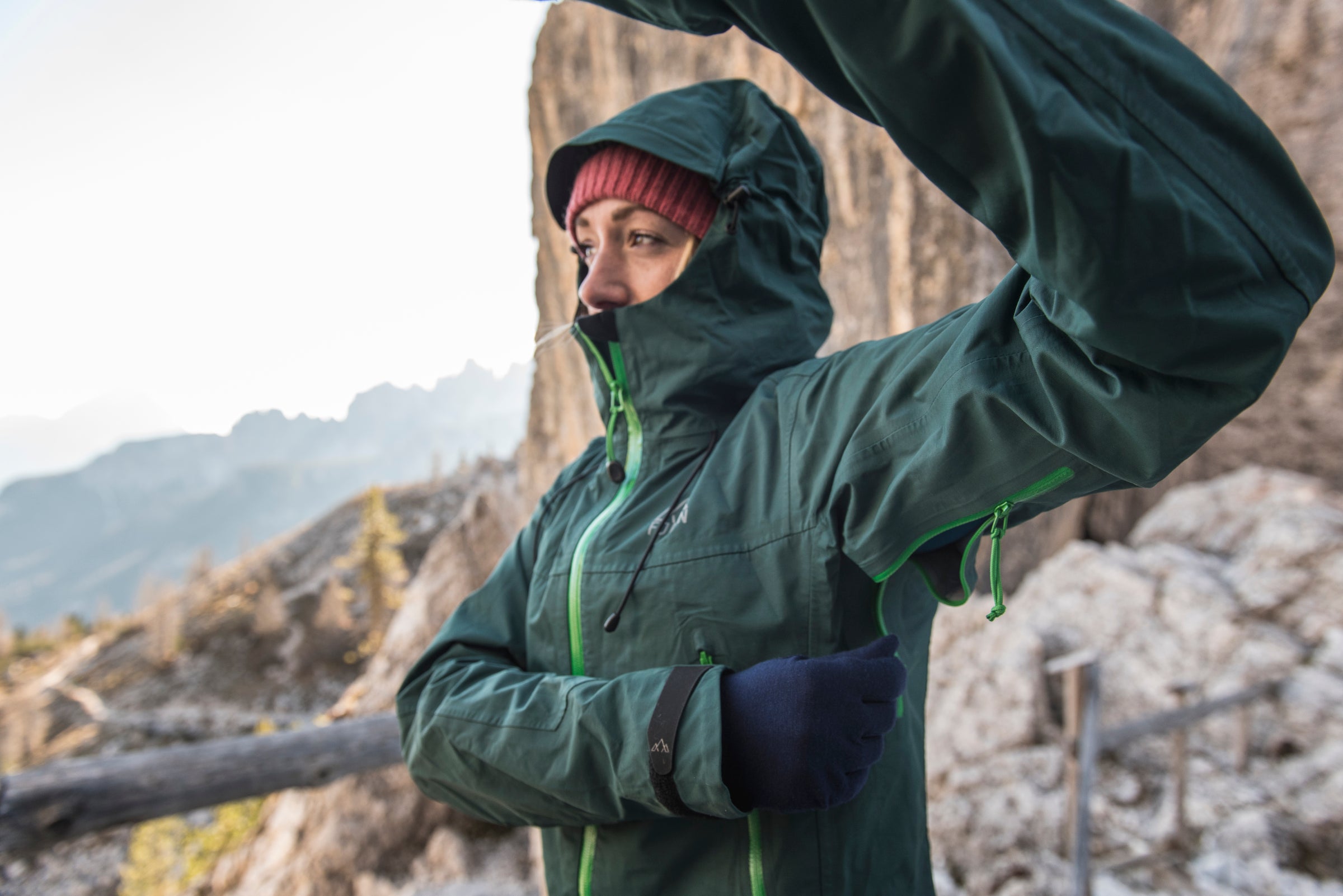To truly connect with the wild landscapes we explore, comfort plays a quiet but essential role. We often hear that layering is the key to staying warm and comfortable, but the practice is more than simply stacking fabric. It’s about weaving together freedom of movement, protection from the elements, and that deep sense of ease that lets you feel fully present in your surroundings.
Layering, however, is riddled with myths that can easily lead you astray — leaving you either sweltering under heavy clothes or exposed to the cold. Let’s slow down, take a reflective approach, and unravel some of these myths, so you can approach your next adventure with confidence.
Myth #1 - Layering adds bulk

Myth
It’s a common belief that layering up inevitably leads to feeling swaddled, hindered, as if every step were heavier for it. Thinking that you’ll be burdened by excessive fabric, compromising your freedom of movement.
The Truth
The right layering system shouldn’t weigh you down or feel cumbersome. Modern outdoor gear is remarkable, often using lightweight yet insulating materials designed to give you warmth without weighing you down. Merino wool, for instance, offers a rare combination of warmth and breathability, while technical synthetics can provide flexibility. Ultimately, you can build a synergy of layers that lets you move freely, without putting too much thought in to it.
If you're interested in learning more, we have another post dedicated to building an effective layering system for hiking — check it out!
The Hiking Layering SystemMyth #2 - Wool is itchy

Myth
Wool’s reputation for being scratchy is hard to shake, especially when memories of itchy sweaters linger from childhood.
The Truth
The wool of today has evolved far beyond those rough fibers. Merino wool is soft against the skin, offering both warmth and a gentle touch. Its fibers are much finer than traditional wool, creating a fabric that feels like a cloud. Merino is also naturally breathable and odour-resistant, making it a perfect base-layer for any layering system. Give wool another try — it’s not the prickly burden you might remember.
Shop MerinoMyth #3 - You should only layer in the cold

Myth
There’s a tendency to associate layering strictly with winter chills, leaving the practice behind as soon as the frost recedes.
The Truth
In changeable weather, layering provides the flexibility to add or remove pieces as needed. A light base-layer, breathable mid-layer, and protective shell can be quickly added or removed as you move from morning mist to afternoon sun. Layering is not just a winter affair!
Myth #4 More layers equal more warmth

Myth
It’s easy to believe that piling on more layers guarantees warmth, but this approach can quickly lead to discomfort. Too many layers trap sweat, dampening your insulation and cooling you down.
The Truth
Effective layering isn’t about quantity — it’s about balance. Start with a moisture-wicking base layer, add insulation that suits the conditions, and finish with a protective outer layer. Each piece plays a role, working to keep you warm without stifling your movement or causing overheating.
Myth #5: All insulation is created equal

Myth
People often believe that any insulating layer will do, whether it’s down, synthetic, or fleece.
The Truth
Down is ultra-light and warm but loses insulation when wet. Synthetic insulation stays warm in damp conditions, making it great for unpredictable weather, though it’s often bulkier. Fleece is breathable and quick-drying but offers less warmth in extreme cold. Understanding these qualities helps you build a layering system tailored to your needs and environment.
Fill Power ExplainedMyth #6: Waterproof kit is always necessary

Myth
When venturing outdoors, it’s easy to assume that fully waterproof gear is a must, especially when rain is in the forecast.
The Truth
In dry or mildly damp conditions, a water-resistant, breathable jacket allows for better airflow, helping you stay comfortable without overheating. Knowing when to choose lighter protection can make all the difference, letting you move with the wind rather than against it.
Myth #7: It’s Summer, I don’t need layers

Myth
When the sun is shining and the weather’s warm, layering seems pointless.
The Truth
Even in summer, layering is key for both protection and adaptability. A lightweight, long-sleeve base layer not only helps regulate temperature but also shields your skin from harmful UV rays. When a cool breeze picks up or the temperature dips in the evening, a packable windbreaker adds just the right amount of warmth without weighing you down. Summer days can be unpredictable, especially in high altitudes or coastal areas, so smart layering ensures you stay comfortable and ready for whatever the day brings, wherever the trail leads.
Conclusion
Understanding the truth behind common layering myths allows you to build a system that’s practical, versatile, and tailored to your needs. From avoiding bulk to choosing the right gear for all seasons, debunking these misconceptions helps you stay comfortable and confident outdoors.
Have more layering myths you’ve heard? Share them in the comments — we’d love to help clear things up!












